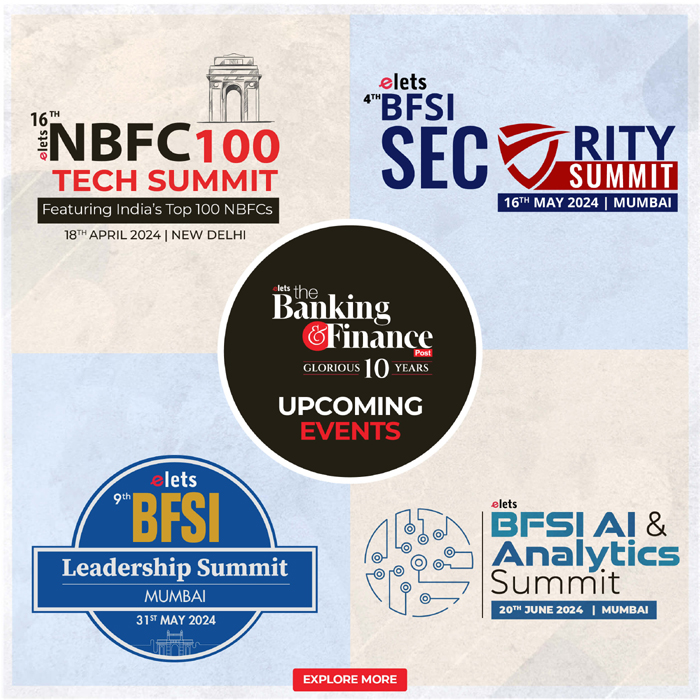Technology is serving as a vehicle to reach out to the financially excluded people living in the remote areas, says Ajit Rath, General Manager-IT, Union Bank of India, in an interaction with Kartik Sharma & Sneha Mejari of Elets News Network (ENN)
How the Union Bank of India is leveraging technology in expanding financial inclusion?
The Union Bank of India (UBI) is the front-runner in technology implementation in the field of last-mile and backend connectivity. For last-mile connectivity, we have tied up with many technology solutions providers. They are technology-cum-banking correspondents in the field, who provide either biometric-based technology or the RuPay Card-based one. As we provide biometric cards that are authenticated on micro-ATMs, the cash transaction is done. We have been providing all these services even before the start of Direct Benefit Transfer (DBT) scheme. After the DBT guidelines from the Department of Financial Services (DFS), we converted the micro-ATM technology into RuPay Cards.
For converting micro-ATM technology into RuPay Cards, we have used a PIN-based authorisation. The data was tested by putting the application on micro-ATMs and making the PIN micro-ATM compliant. At the back end, we have the ATM switch that we have already given to 2.5 crore customers. FI gateway is responsible for routing the FI transactions to our servers and other technologies for authentication. As a customer swipes a RuPay Card, the transaction is routed to the FI server. Thereafter, it goes to the ATM server, and a PIN-based transaction is generated. It is then directed to the core banking. That is how last-mile as well as back-end connectivity works.
The number of ATM transactions is increasing with each passing day. What type of innovations do you foresee in the ATM technology in future?
ATMs today are serving a major chunk of the customer base. Since 2007-08, the number of ATMs has risen manifold. UBI alone boasts of as many as 20,000 ATMs catering to our customers through 4,000 branches. India is a vast country, and in spite of there being over 1.5 lakh ATMs, there is still huge scope to open more in different parts of the country.
An ATM has two capabilities, first it can dispense cash, and secondly, it is enabled for doing online transactions. India is a cash-oriented society, as most of the transactions— nearly 86 percent, take place in the form of cash. The trend is, however, likely to continue for some time to come, until people fully embrace online transactions.
If we compare India with European countries, it has a lot of potential to increase its e-transactions, which will push the financial inclusion further. The Business Correspondents and merchants have also been roped into cashless transactions mode. Therefore, we are capable of heading towards a cashless society, which will eventually bring down the number of ATMs. However, as of now, the number of cashless transactions is not very high, therefore, the number of ATMs is on the rise.
The Union Bank of India alone boasts of as many as 20,000 ATMs catering to our customers through 4,000 branches…in spite of there being over 1.5 lakh ATMs, there is still huge scope to open more
The Government of India has started an ambitious financial inclusion programme — PMJDY. What role do you see for IT in reaching out to the unbanked lot?
The success of Pradhan Mantri Jan- Dhan Yojana (PMJDY) is heavily dependent on the use of information technology. Without proper implementation of IT tools, it will be difficult for the banks to reach out to the financially excluded masses residing in the distant areas of the country. It was only after the onset of IT times that the last-mile connectivity could became a reality. With the deployment of right type of telecom network and hardware gizmos like GPRS, it has become possible to bring the unbanked people in the remote areas into the banking mainstream.
Before PMJDY, standardisation was lacking in biometric and other types of transactions. Ever since the implementation of RuPay Cards and PMJDY scheme, the standardisation has been put in place. In our country, where everyone is number literate, even if one cannot read or write, one is capable of entering a PIN number for transactions. Thus, IT has made it possible for every person to take benefits from the new-age banking system.
How do you envision Indian banking industry five years from now, and what would be the role of IT in developing Indian banking sector?
For the last one decade, we are witnessing an increasing use and penetration of IT into the banking sector. We have seen deployment of IT in banks, starting from core baking processing and further easing complexities of payment gateways, connecting with application solutions and third-party database for payment verification as credit scores from CIBIL etc. Most of the transactions are done online; even the cheques get cleared through an automated process. The user is fast getting acquainted with the system. In addition to it, the digital certificate and such approvals have gone online, thus, integrating various organisations.
Also, PMJDY and payment banks offer even better opportunities, as Business Correspondents and merchant bankers are expanding banking infrastructure. All this can help banks improve their efficiency and reduce operational costs.
Elets The Banking and Finance Post Magazine has carved out a niche for itself in the crowded market with exclusive & unique content. Get in-depth insights on trend-setting innovations & transformation in the BFSI sector. Best offers for Print + Digital issues! Subscribe here➔ www.eletsonline.com/subscription/




















